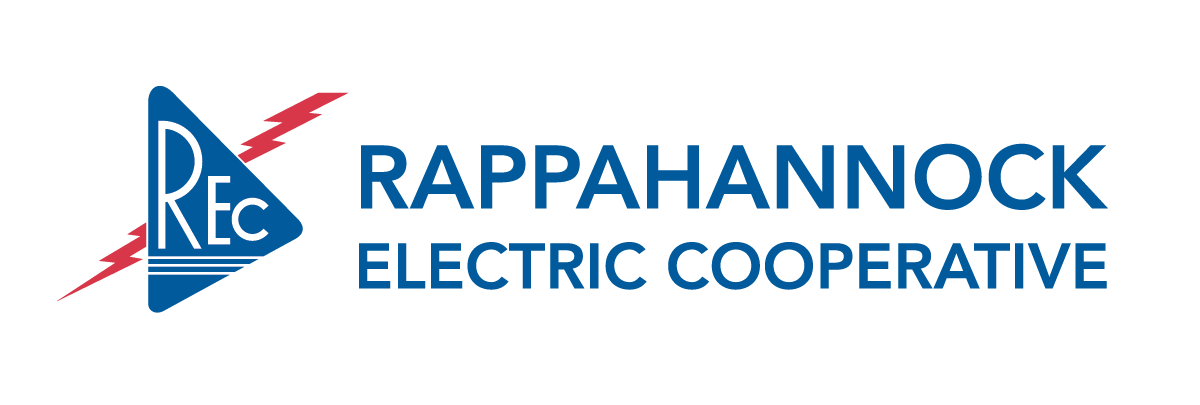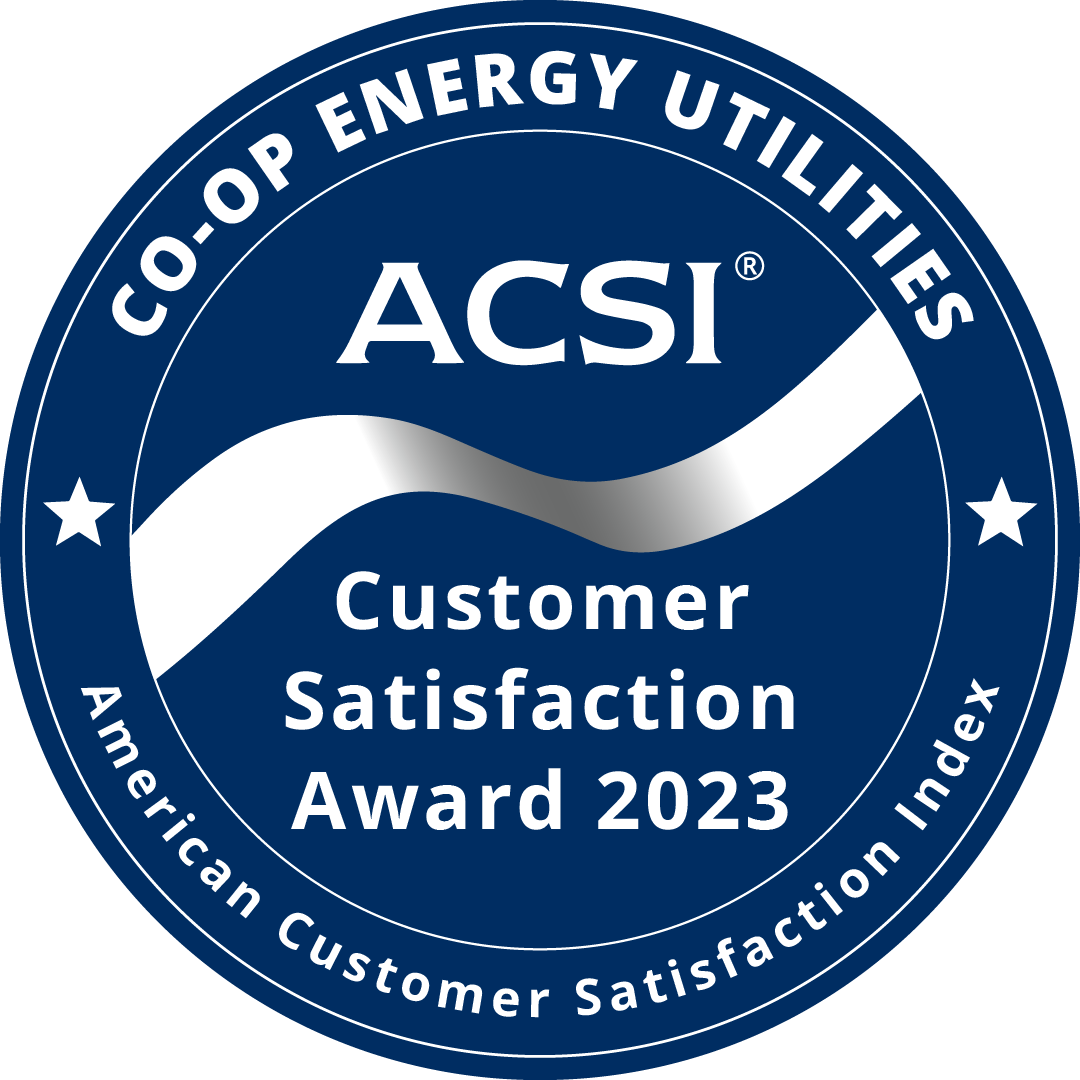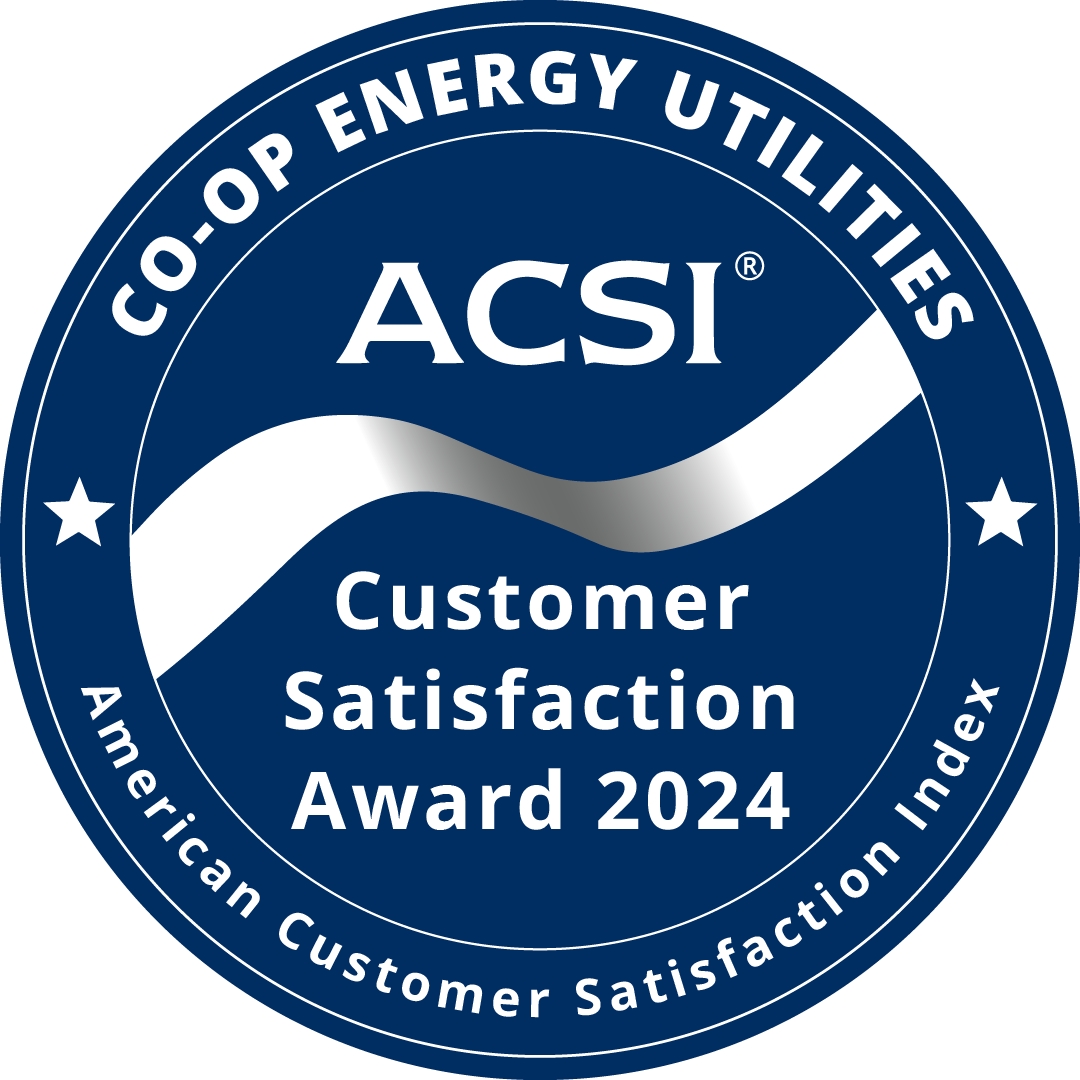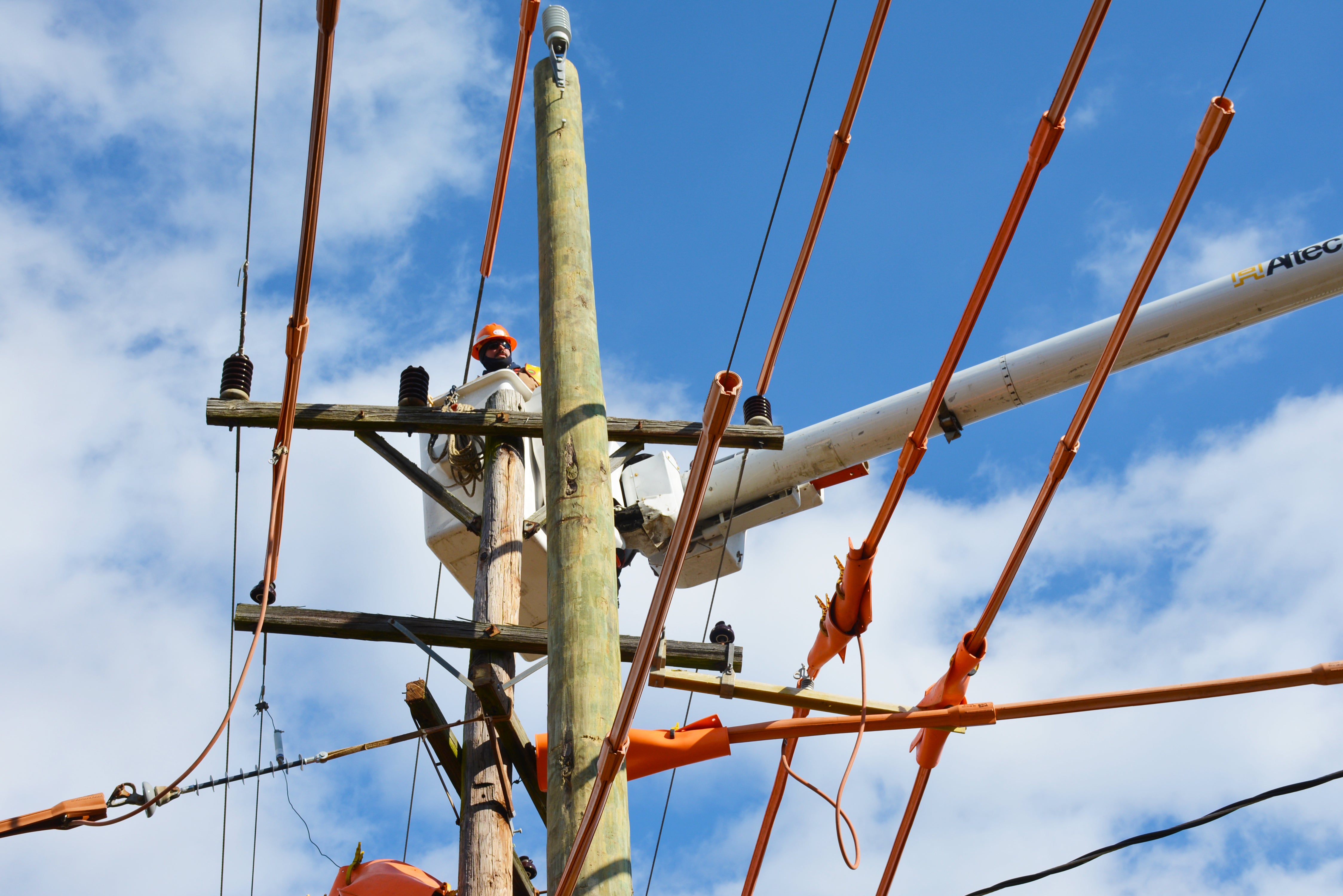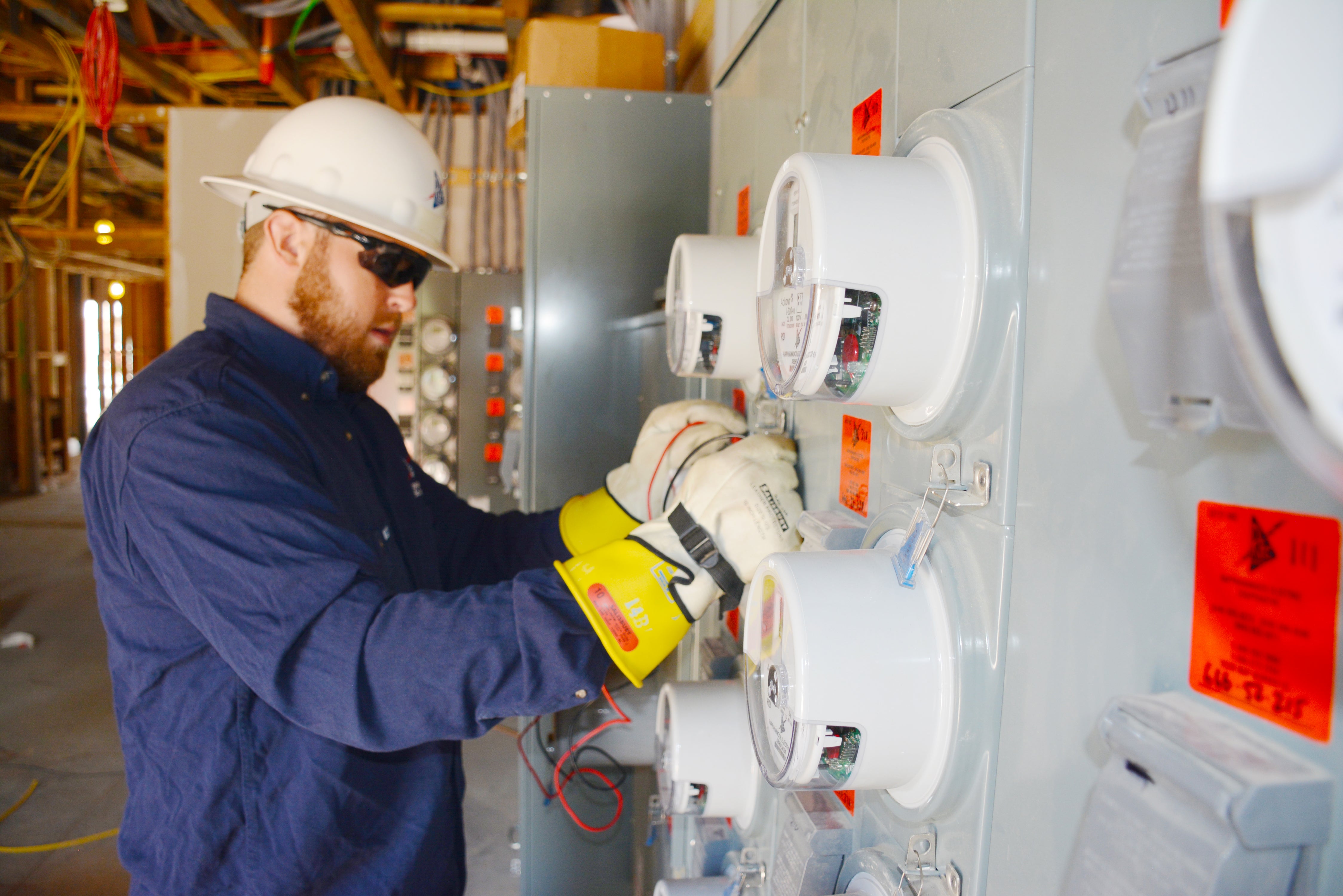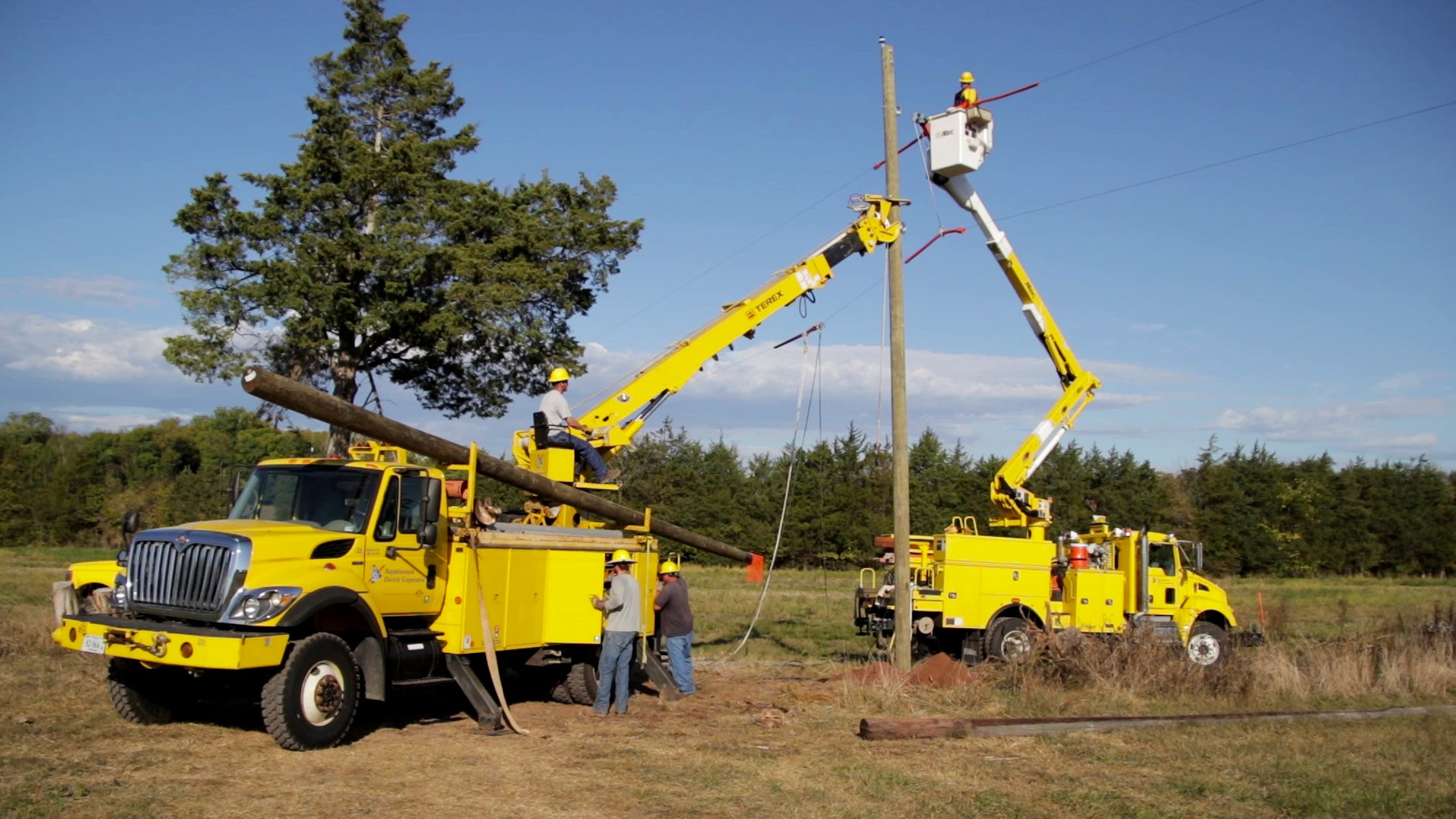REC employees work every day to ensure your electricity is always available when you need it.
Upgrading Power Lines
REC regularly plans projects to upgrade power lines. Upgrades can more than double the capacity compared with the old lines. They also improve service reliability. In addition, these upgrades give crews the opportunity to restore service through load transfers, something that's not possible without replacing lines.
Rephasing Power Lines and Replacing Poles
REC and its contractors work to improve service to members by rephasing power lines and installing new utility poles. Where needed, crews replace poles, increasing the load capacity of power lines.
Maintaining Underground Power lines
REC installs underground power lines to serve members. The Cooperative monitors the performance of these cables and, as needed, proactively replaces them with new, better-designed conductors. The replacement cables have a longer life and are more reliable and cost effective.
Substation Maintenance
In addition to servicing more than 17,000 miles of power lines, REC also maintains 86 substations throughout its 22-county territory.
Each substation contains a wide array of equipment, including transformers, lightning arrestors, circuit breakers, insulators and more. A power transformer performs the heavy work, altering voltage as needed.
Substation technicians at REC perform a variety of tasks.
- Regularly scheduled substation inspections and routine testing of equipment are required, as well as supervisory control and data acquisition (SCADA), load management and automated meter reading (AMR) equipment installations.
- Substation technicians also install and maintain substation equipment, install mobile substations, conduct calibration and testing of protective relays used in substations and maintain the Spill Prevention Control and Countermeasures plan of REC.
In recent years, REC has installed state-of-the-art communication equipment in many of its substations.
System Inspections
REC uses ground patrol and aerial patrol as techniques to discover potential problem areas.
Inspections often find the following types of problems:
- Pole tops weakened by woodpecker holes.
- Damaged insulators (e.g. insulator broken or flashed over).
- Blown arresters.
- Damaged or deteriorating conductor.
- Loose or broken hardware (e.g. damaged crossarms, bolts that have loosened, broken crossarm braces).
- Dead or leaning trees that could fall and contact the line.
- Debris on wires or poles (helium balloons, dove decoys, trash).
- Obstructions/encroachments within the right of way.
- Any activity within the right of way that may endanger the public.
- Trees that have fallen and may block urgently needed access to the lines.
- Storage of items within our right of way that could potentially be blown into the lines during high winds.
- Deer stands within the right of way or attached to poles.
